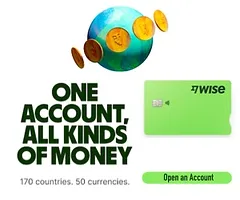BANK REWARDS PROGRAMS IN CANADA – POINTS, CASHBACK AND WHY BANKS GIVE THEM
In Canada, bank rewards programs are designed to hook customers with perks like points, cash back, or miles every time you swipe your card. Major banks like RBC, TD, Scotiabank, BMO, and CIBC use these to build loyalty, while digital players like Tangerine and Wealthsimple add competition. The appeal is obvious—you earn flights, gift cards, or cash back on purchases you’d make anyway. But behind the “freebies,” banks cover costs with merchant fees, interest charges, and partnerships with airlines or retailers. Used responsibly, these programs save Canadians hundreds per year. Managed poorly, though, high interest cancels out the rewards. Here’s a deep dive into how they work, who offers them, and how banks profit while you collect perks.

How bank rewards work in Canada
In Canada, bank rewards programs function as loyalty systems tied primarily to credit cards and sometimes debit cards. Each time a consumer spends—whether buying groceries, paying for gas, or shopping online—they accumulate either points, cash back, or airline miles. These rewards can then be redeemed for items ranging from merchandise and travel to direct statement credits, effectively reducing future costs. The system is designed to encourage consistent card use over cash, reinforcing the shift toward digital payments in the Canadian economy.
Why banks set them up
The primary driver is customer retention. With millions of Canadians carrying more than one credit card, competition among banks is intense. Rewards create a “stickiness” effect, keeping customers tied to a particular institution. According to the Canadian Bankers Association, over 70% of Canadians choose or keep a card based on rewards offered. By providing incentives, banks not only prevent customer churn but also motivate higher transaction volumes.
Points accumulate per dollar spent, typically 1–2 points per $1.
Cash back is common, ranging from 0.5% to 4% depending on the category.
Travel miles link directly to Aeroplan or WestJet Rewards for flight redemptions.
Additional perks include insurance coverage, airport lounge access, and partner discounts.
Overall, rewards programs have become a staple of Canadian banking, not as gifts, but as powerful tools to reinforce spending behaviors while driving profitability for the banks themselves.
Major Canadian banks offering rewards
Canada’s “Big Five”—RBC, TD, Scotiabank, BMO, and CIBC—dominate the rewards landscape, each with distinct loyalty ecosystems. RBC’s Avion Rewards is one of the most flexible, offering travel redemptions, merchandise, and even Apple products. TD integrates tightly with Aeroplan, perfect for frequent Air Canada flyers. Scotiabank’s Scene+ builds on entertainment and groceries, while BMO Rewards emphasizes travel and investment redemptions. CIBC splits between Aventura and Aeroplan programs, catering to both generalists and travelers. National Bank, Desjardins, and HSBC further broaden the field with their own proprietary systems.
How each program stacks up
Each bank positions its program around lifestyle priorities:
RBC Avion: 1–1.25 points per $1, flexible transfers to travel partners.
TD Aeroplan: Up to 1.5 points per $1 on groceries and gas, plus Air Canada perks like checked bags.
Scotiabank Scene+: Up to 6 points per $1 on groceries/movies, redeemable at Cineplex and Empire stores.
BMO Rewards: 1–5 points per $1, plus ability to redeem for investments.
CIBC Aventura: 1–2 points per $1, flexible redemptions for any airline.
Digital challengers like Tangerine and Simplii disrupt the space by offering no-fee cash back cards with customizable categories, appealing to Canadians who prefer direct monetary rewards over complex point systems. Credit unions like Meridian and Vancity add regional flavor, often tying rewards to community or eco-friendly initiatives.
Where banks get the money
The question many Canadians ask is: if banks are “giving away” flights, gift cards, and cash back, where does the funding come from? The answer lies in their revenue model. Rewards aren’t free—they are subsidized by the fees and interest charges banks collect every day. Every credit card swipe generates an interchange fee, typically 1–3%, charged to merchants. A portion of this covers rewards, while the remainder adds to bank profit. For example, if a card offers 1% cash back, the bank still pockets the difference after merchant fees.
Other funding streams
Interest charges: Carrying balances exposes consumers to 20%+ APR, which far outweighs the cost of rewards.
Partnerships: Airlines, retailers, and entertainment brands pay banks for customer referrals via co-branded cards.
Data monetization: Banks anonymize and sell consumer spending trends to marketers.
Customer loyalty: Retaining customers reduces acquisition costs, making the rewards a long-term profit play.
In short, banks aren’t in the business of charity—they use rewards programs to fuel revenue growth while shaping consumer behavior. The more you spend, the more they earn, and the perks are strategically designed to keep you swiping.







